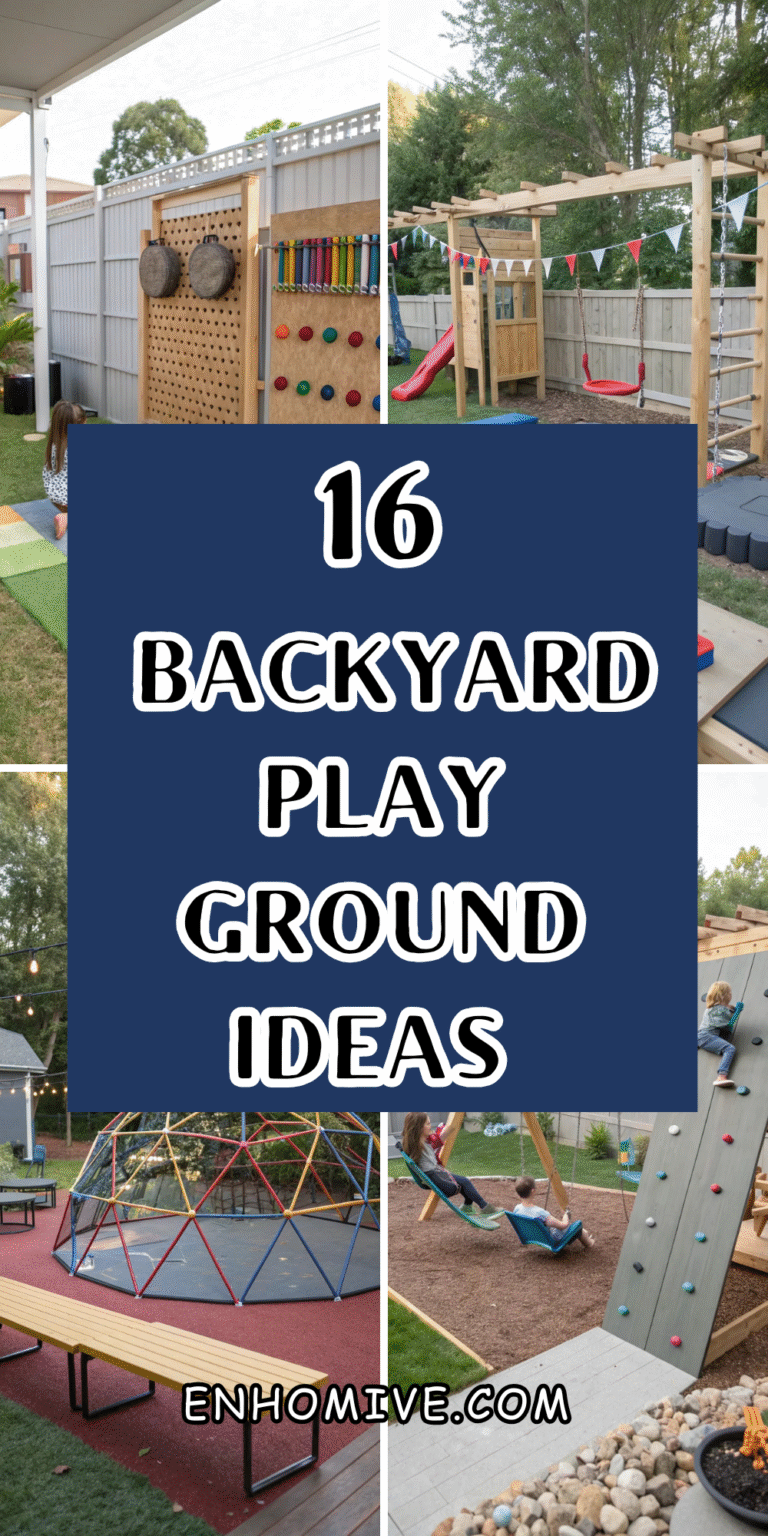17 Easy Small Garage Workshop Ideas (Make a Big Difference!)
Your cramped garage can become the workshop you’ve always wanted without requiring a bigger space or massive budget. Small workshops force you to think smarter about every square inch, leading to more efficient and organized setups than sprawling shops with endless room for clutter.
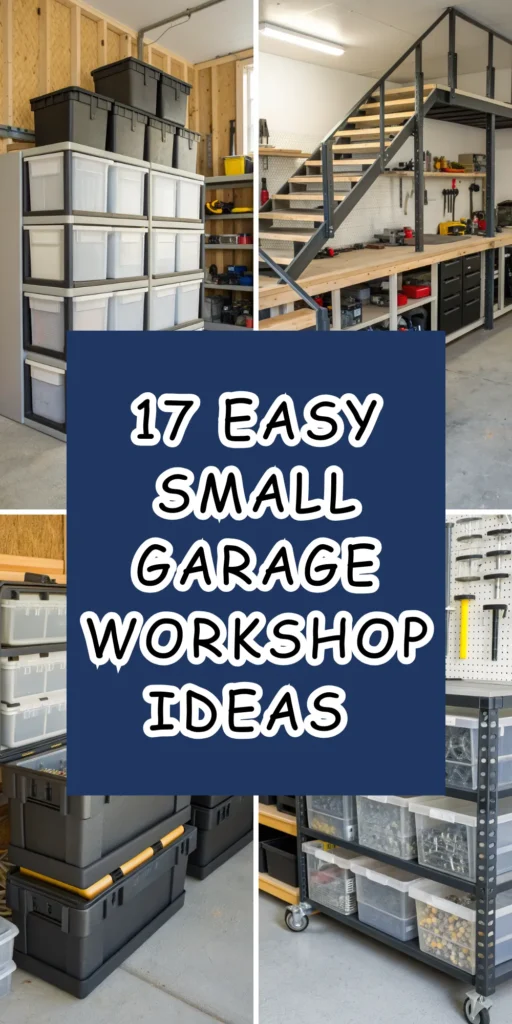
These clever ideas prove you can tackle serious projects in tight quarters when you maximize vertical space, choose multi-purpose solutions, and keep everything organized.
Wall-Mounted Fold-Down Workbench
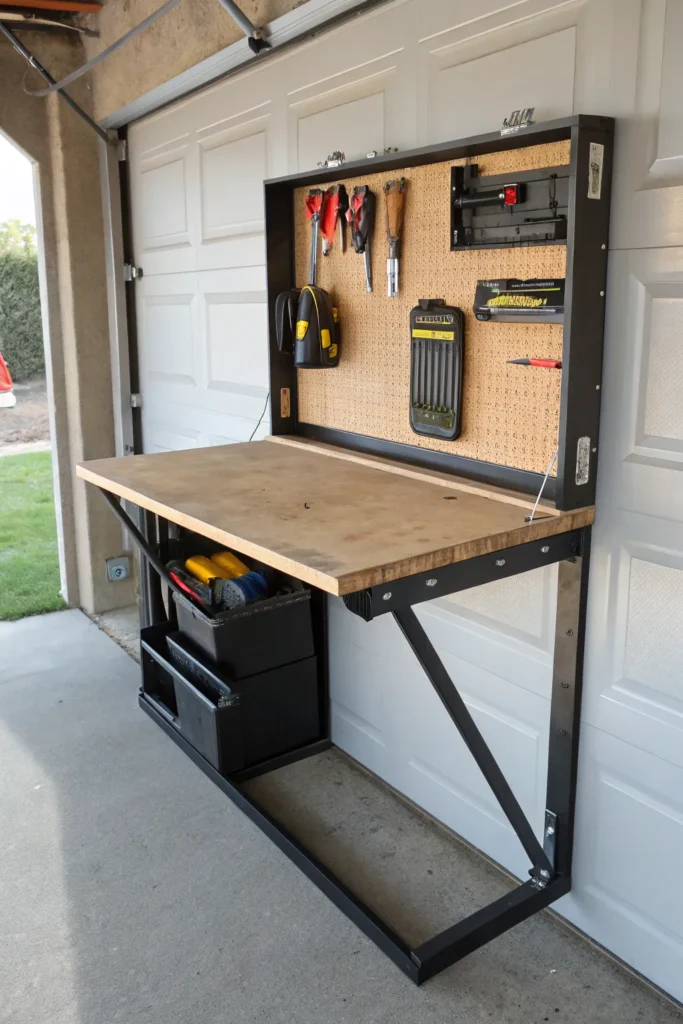
Install a sturdy workbench that folds flat against the wall when not in use. This game-changing solution gives you ample work surface during projects while preserving parking space and garage functionality. Heavy-duty hinges and proper wall anchoring ensure the bench handles demanding tasks safely.
Choose bench depths that provide adequate work space without interfering with car doors when folded down. Add a tool pegboard above the bench area to keep essentials within arm’s reach. Consider built-in storage underneath for items you need frequently but want to keep dust-free.
Ceiling-Mounted Storage Systems
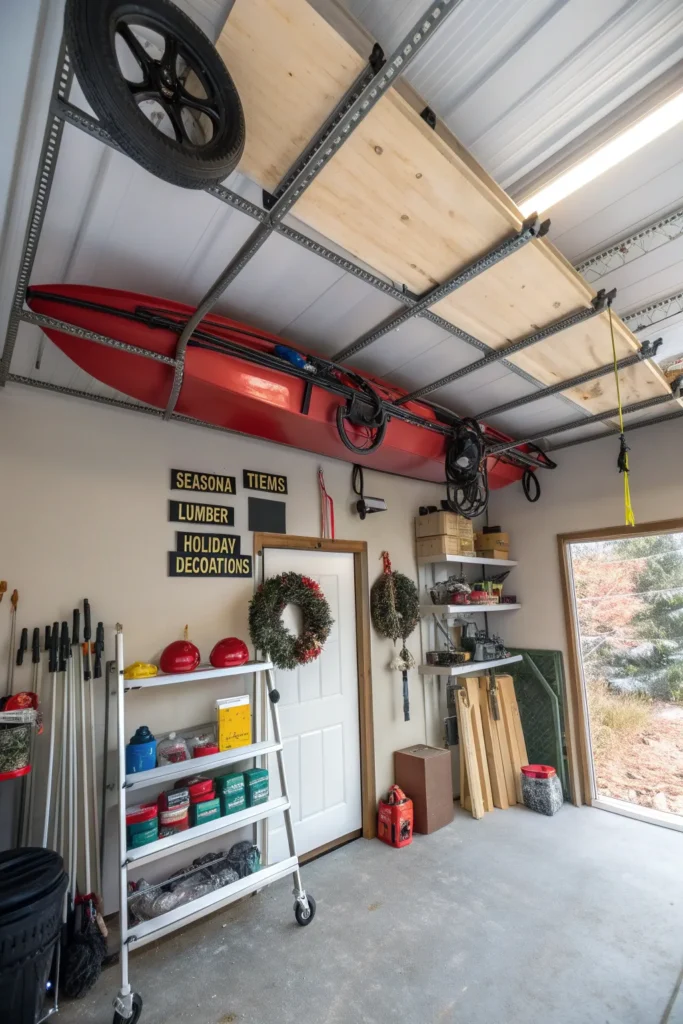
Reclaim floor space by moving seasonal items, lumber, and bulky equipment overhead. Ceiling-mounted racks handle everything from kayaks to holiday decorations while keeping your workshop floor clear for actual work activities.
Install systems rated for your ceiling type and load requirements. Pulley systems make heavy items manageable for one-person operation. Label overhead storage clearly since items up there tend to disappear from memory. Consider how stored items affect garage door operation and clearance.
Rolling Tool Carts
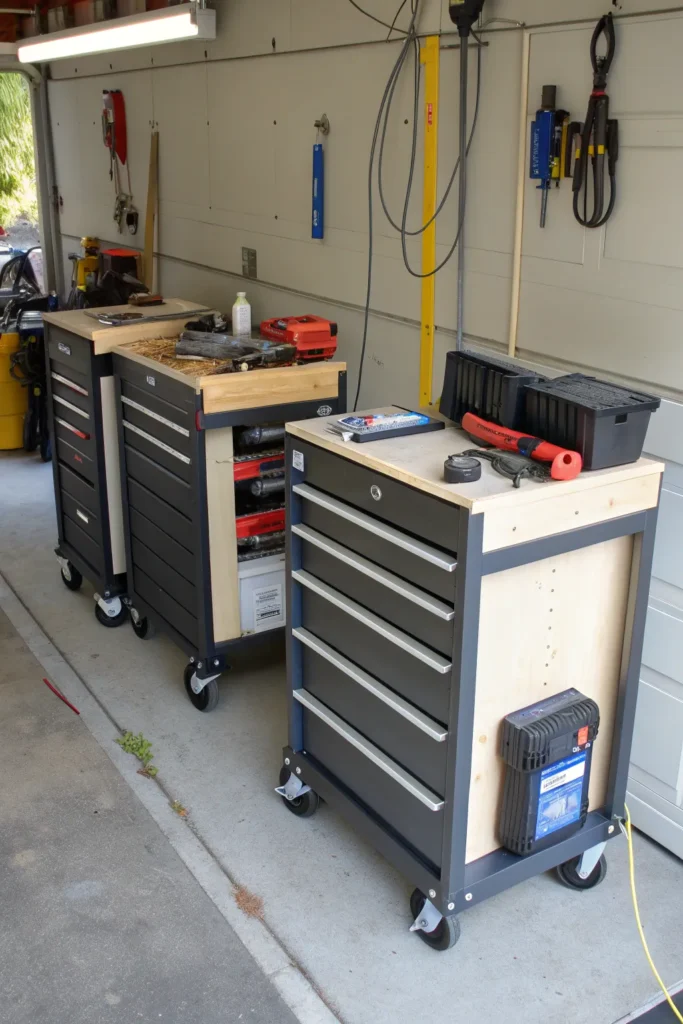
Create mobile workshops with rolling carts that bring tools directly to your projects. These versatile solutions work as assembly stations, finishing areas, or temporary workbenches that adapt to different project needs while storing compactly when not in use.
Choose carts with locking wheels to prevent unwanted movement during detailed work. Multiple drawer sizes handle everything from small hardware to larger hand tools. Some carts include built-in power strips and cord management for tool charging and operation.
Pegboard Organization Walls
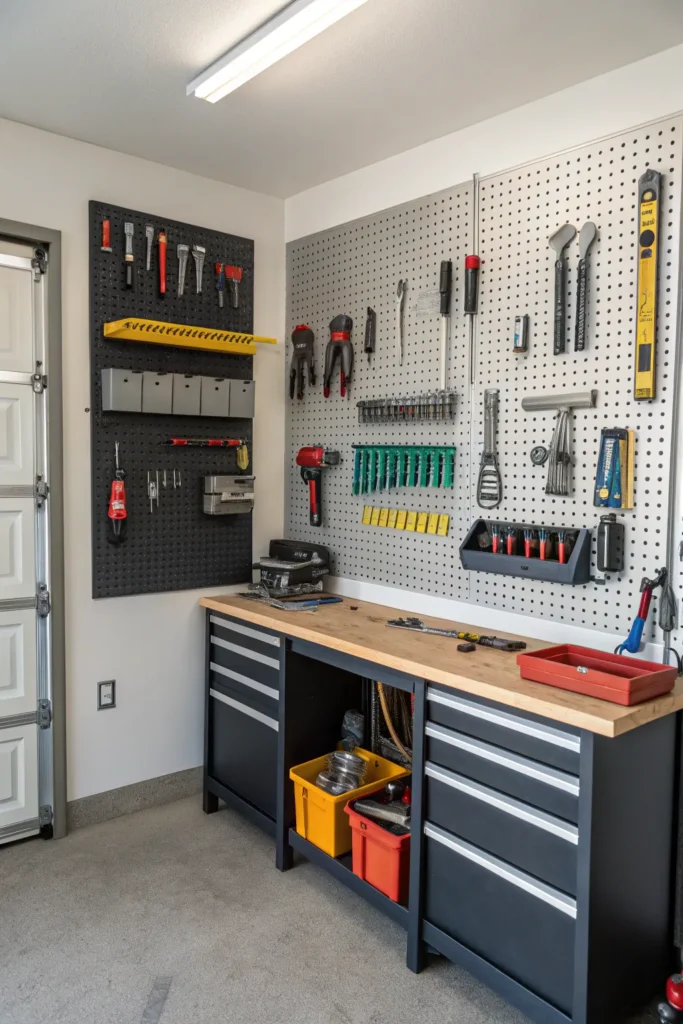
Transform blank walls into customizable tool storage with pegboard systems that adapt as your tool collection grows. Modern pegboard comes in attractive colors and finishes that make your workshop look intentional rather than purely utilitarian.
Plan your pegboard layout before installation to ensure optimal tool placement and visual balance. Use consistent hook styles for cleaner appearance, and outline tools with markers to maintain organization. Consider pegboard panels that frame workbenches or equipment areas.
Overhead Lumber Racks
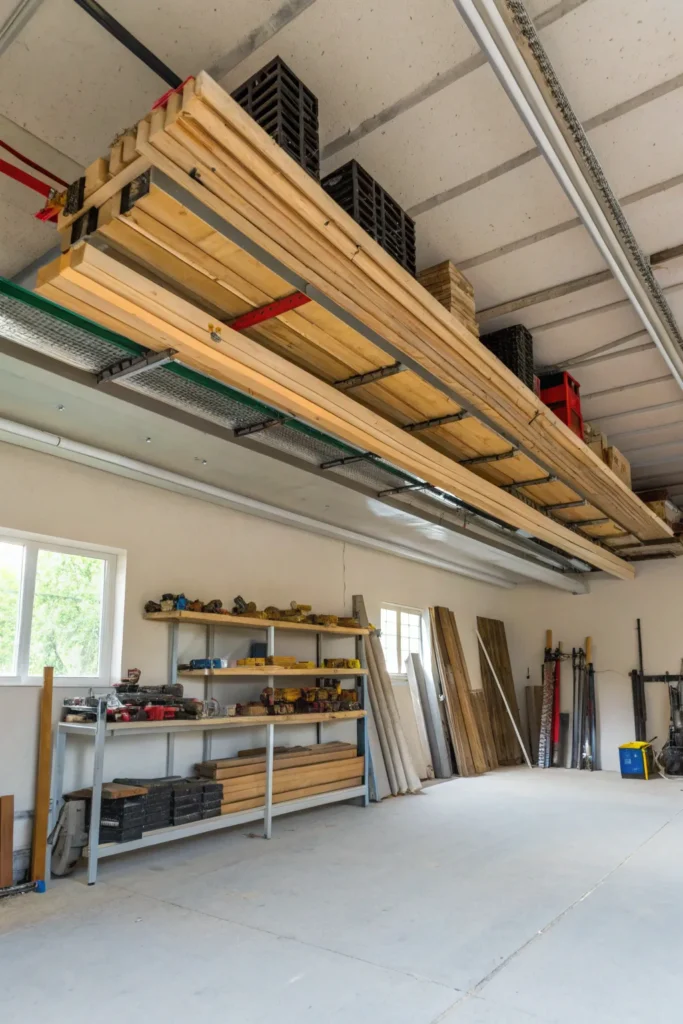
Store long materials like lumber, pipes, and molding on ceiling-mounted racks that keep them organized and accessible without consuming floor space. Proper storage prevents warping while making material selection easier for projects.
Build racks with adequate spacing for different material sizes and easy loading from ground level. Consider adding labels for different lumber types and sizes. Position racks where you can easily see what’s available without moving other stored items.
Magnetic Tool Storage
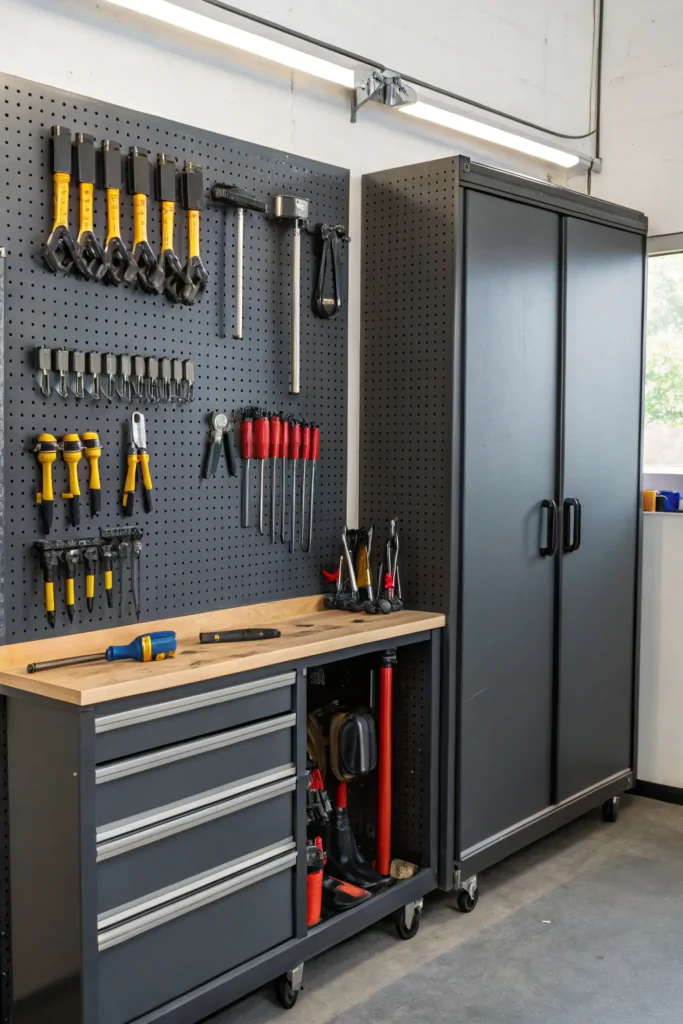
Mount magnetic strips and holders throughout your workshop to keep metal tools organized and instantly accessible. This approach works particularly well for frequently used items that you want to grab quickly without digging through drawers.
Position magnetic storage at convenient heights for different tasks. Use strong magnets that securely hold your heaviest tools. Consider magnetic strips inside cabinet doors or on workbench sides for tools that don’t need to be displayed constantly.
Modular Storage Cubes
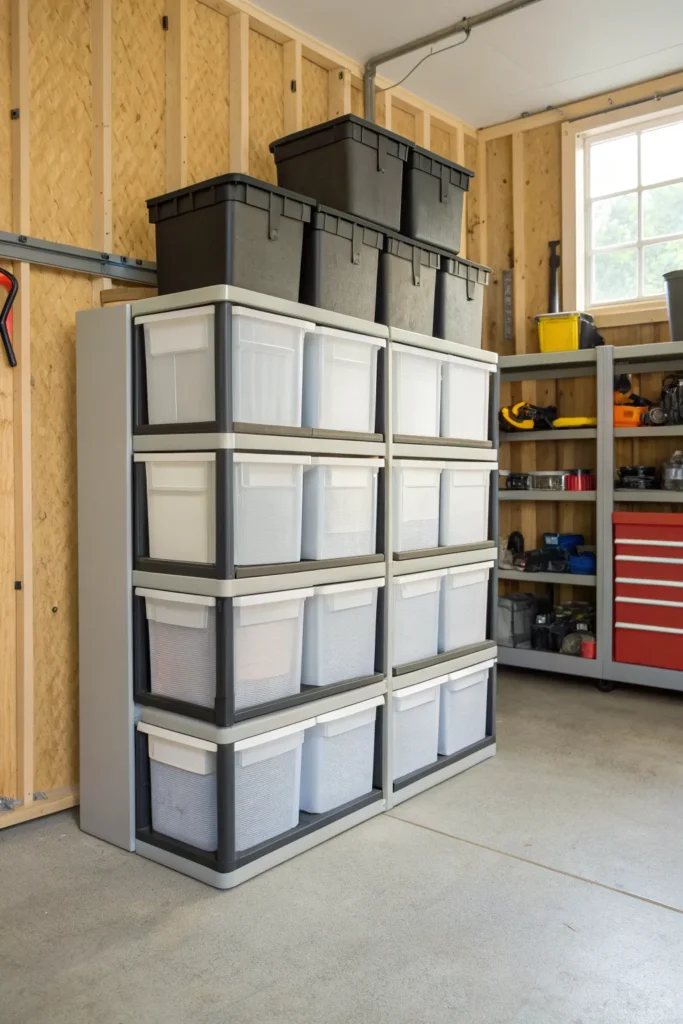
Create flexible storage systems with stackable cubes that reconfigure as your needs change. These systems handle everything from hardware sorting to project material organization while maintaining clean, organized appearance.
Choose cube systems with removable bins for easy transport of materials to work areas. Label everything clearly to maintain organization over time. Consider how cube arrangements create work zones and traffic flow through your compact workshop space.
Compact Assembly Station
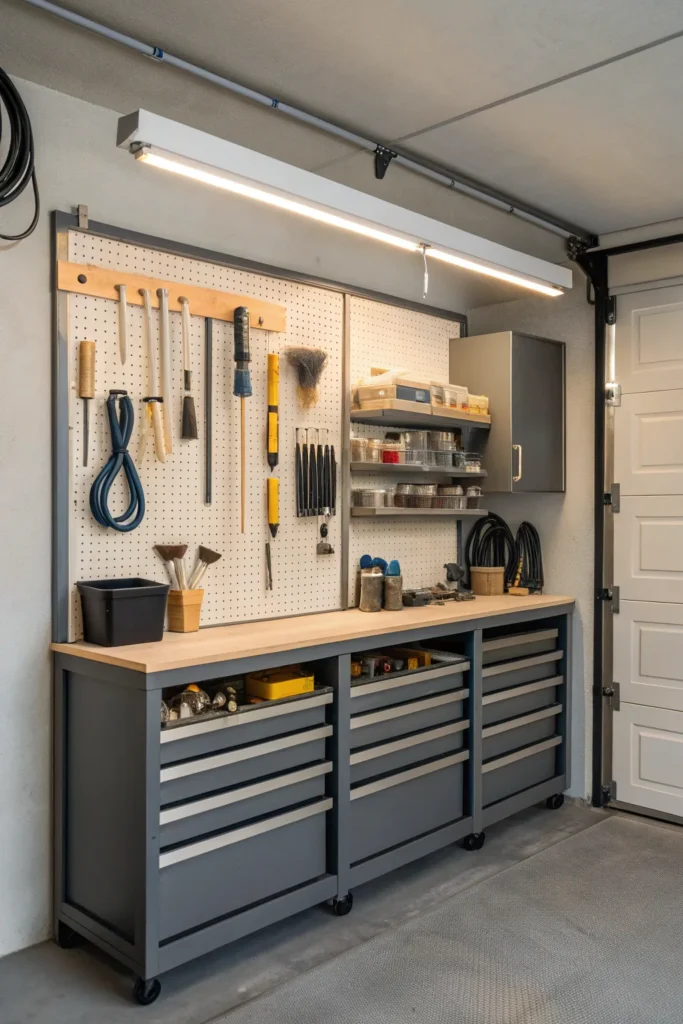
Dedicate one corner to assembly and finishing work with proper lighting, ventilation, and storage for supplies. This specialized area lets you handle detail work without contaminating your entire workshop with dust or fumes.
Include adequate ventilation for finishing materials and proper lighting for detailed tasks. Consider how this station integrates with your overall workshop flow. Add storage for brushes, sandpaper, and finishing supplies that keeps them organized but easily accessible.
Wall-Mounted Clamp Storage
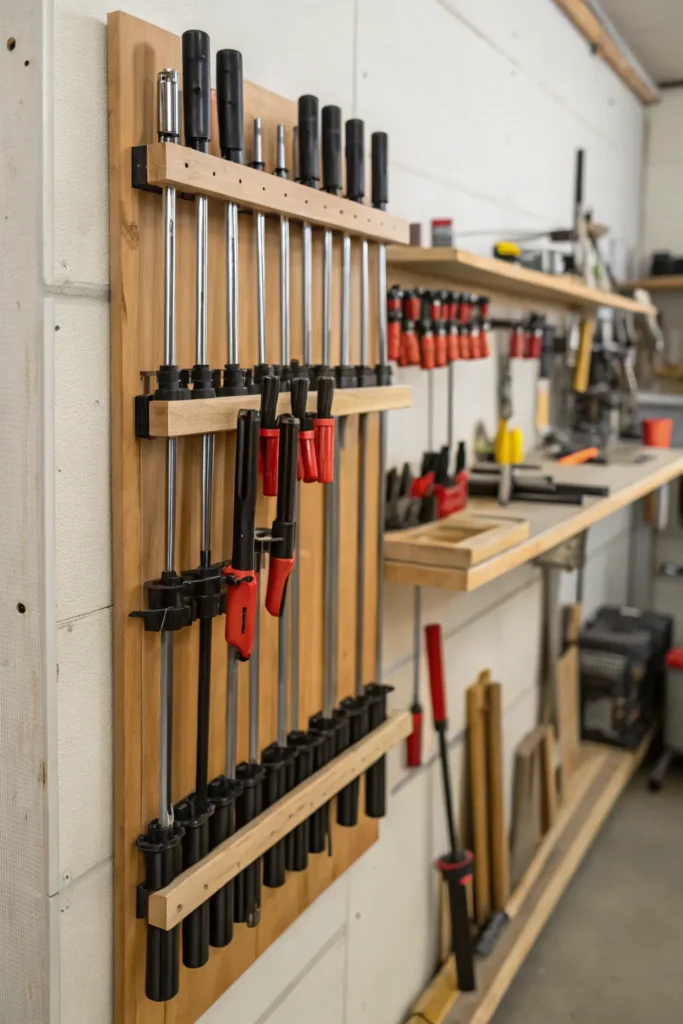
Organize clamps on wall-mounted systems that keep them visible and accessible while freeing up valuable drawer and shelf space. Proper clamp storage prevents damage while making project setup faster and more efficient.
Group clamps by size and type for easiest selection during projects. Consider storage that lets you grab clamps with one hand while holding project pieces. Some systems include integrated storage for clamp accessories and replacement parts.
Multi-Level Work Surfaces
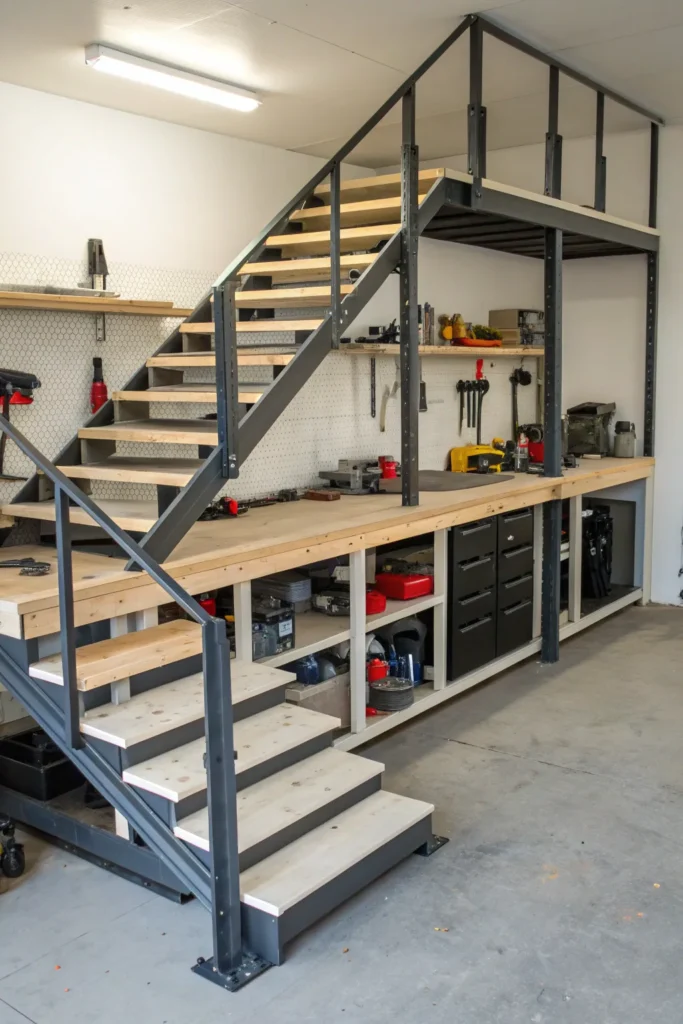
Create different work heights for various tasks with stepped work surfaces or adjustable-height options. This approach accommodates different project types while maximizing usable surface area within your limited square footage.
Consider how different heights serve specific tasks like assembly, finishing, or precision work. Add storage underneath each level for tools and supplies specific to those tasks. This organization reduces setup time and keeps related items together.
Hardware Sorting Systems
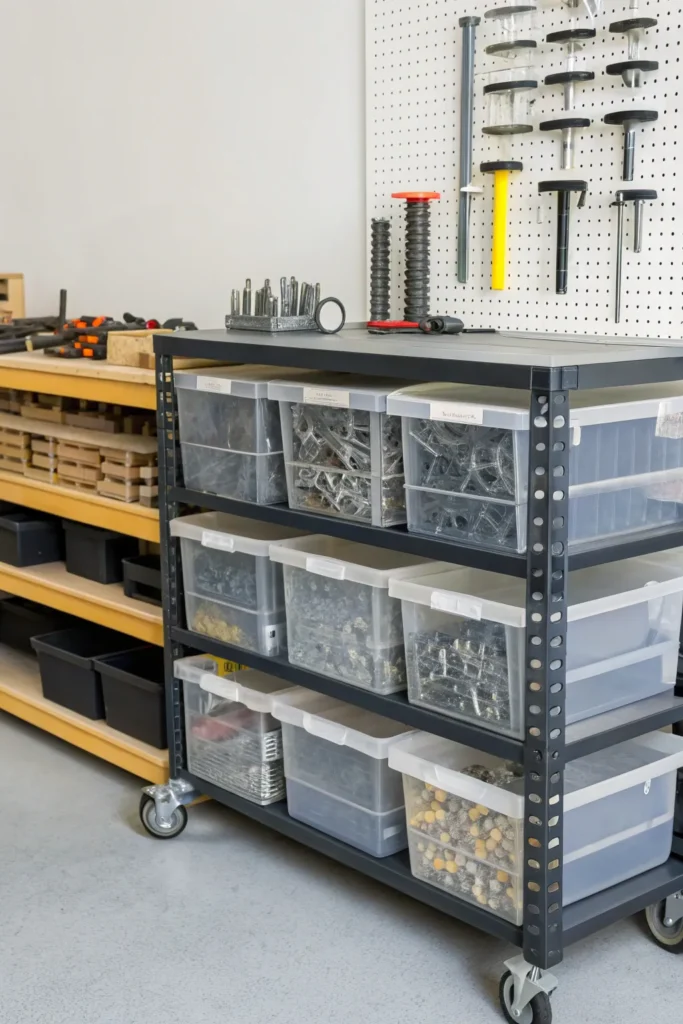
Organize screws, bolts, and small hardware in clear, labeled containers that let you find exactly what you need quickly. Good sorting systems prevent duplicate purchases while ensuring you have the right fasteners for every project.
Choose container systems that stack efficiently and resist static that attracts metal particles. Consider mobile sorting carts that bring hardware to your work area. Label everything clearly and maintain systems consistently to prevent organization breakdown over time.
Dust Collection Integration
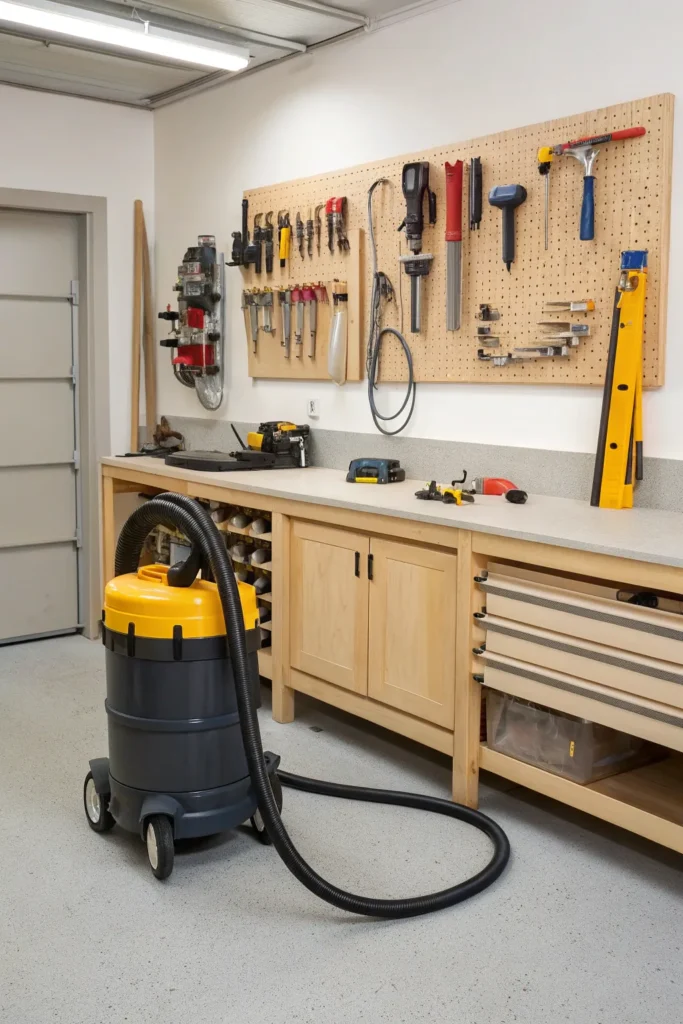
Install simple dust collection that connects to multiple tools while taking up minimal space. Compact shop vacuums with tool-triggered activation keep your workshop cleaner while protecting your lungs and extending tool life.
Consider central vacuum systems that serve multiple work areas from one unit. Position collection points conveniently for your most dust-producing tools. Good dust control makes small workshops more pleasant to work in and easier to keep organized.
Sliding Door Cabinets
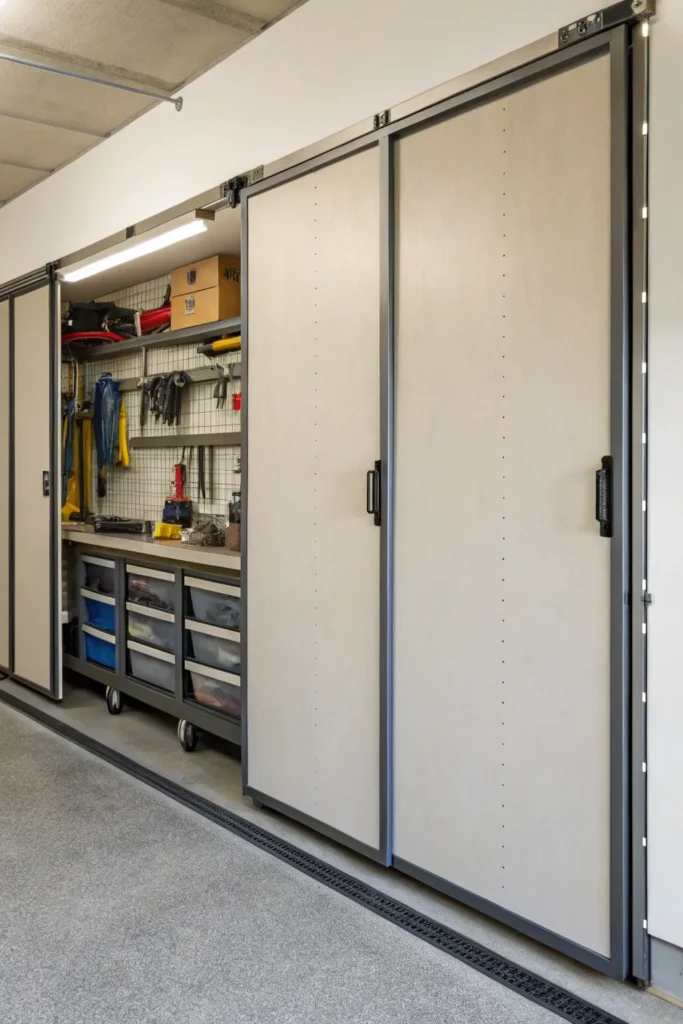
Maximize storage access in tight spaces with sliding cabinet doors that don’t require swing clearance. This approach lets you install storage in areas where traditional hinged doors would interfere with workflow or movement.
Choose sliding hardware rated for your door weight and usage frequency. Consider transparent or mesh doors that let you see contents without opening. This storage style works particularly well for items you access frequently but want to keep dust-free.
Corner Workstation Optimization
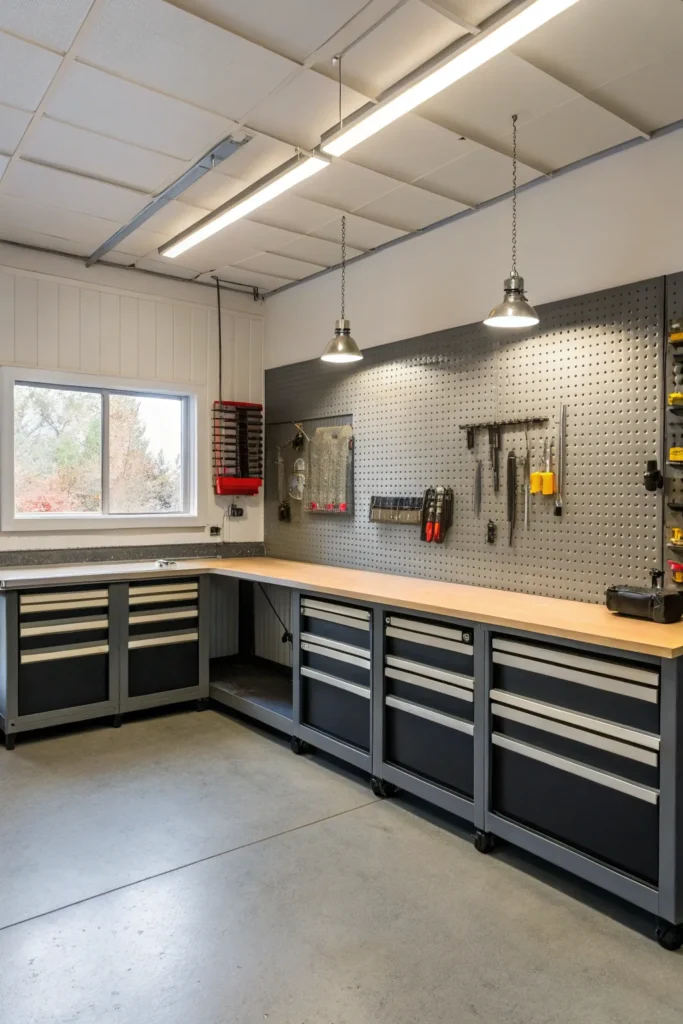
Transform awkward corners into highly functional work areas with custom-fitted benches and storage. Corner spaces often go unused but can accommodate specialized tasks like electronics repair, model building, or precision assembly work.
Design corner workstations with adequate lighting and proper seating for detailed tasks. Include storage specifically designed for the work you’ll do in that space. Consider how corner areas integrate with your overall workshop traffic flow and project movement.
Portable Project Boxes
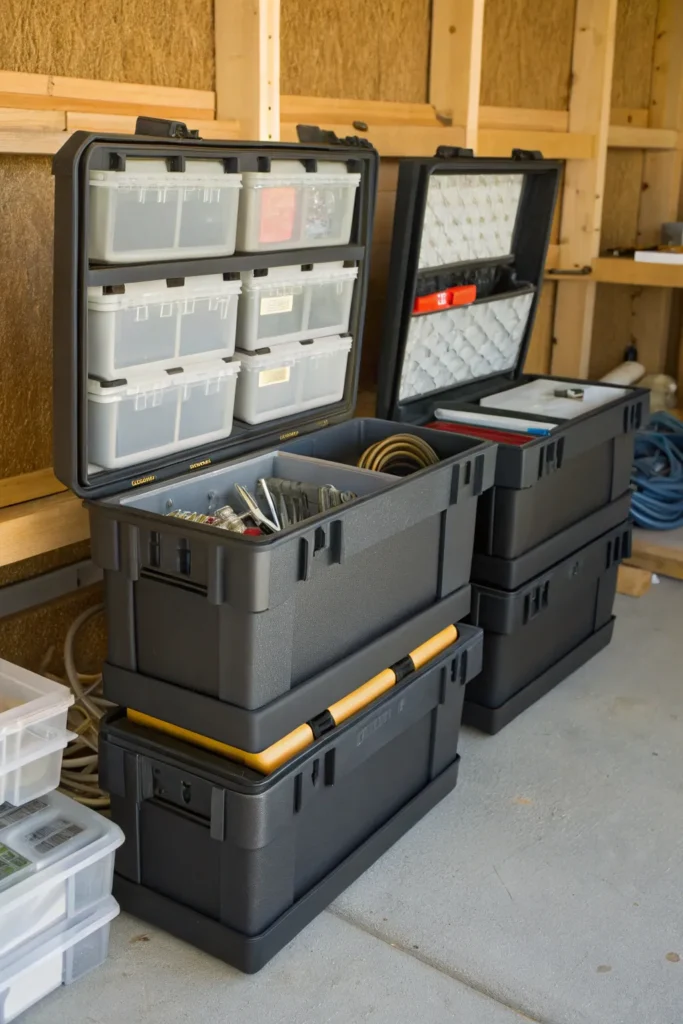
Organize ongoing projects in labeled boxes or bins that move easily between storage and work areas. This system lets you work on multiple projects without losing parts or progress while keeping your workshop surface clear for new tasks.
Choose boxes that stack efficiently when projects are on hold. Include project notes, hardware, and reference materials in each box for complete organization. This approach works particularly well for projects that take weeks or months to complete.
Wall-Mounted Air Compressor
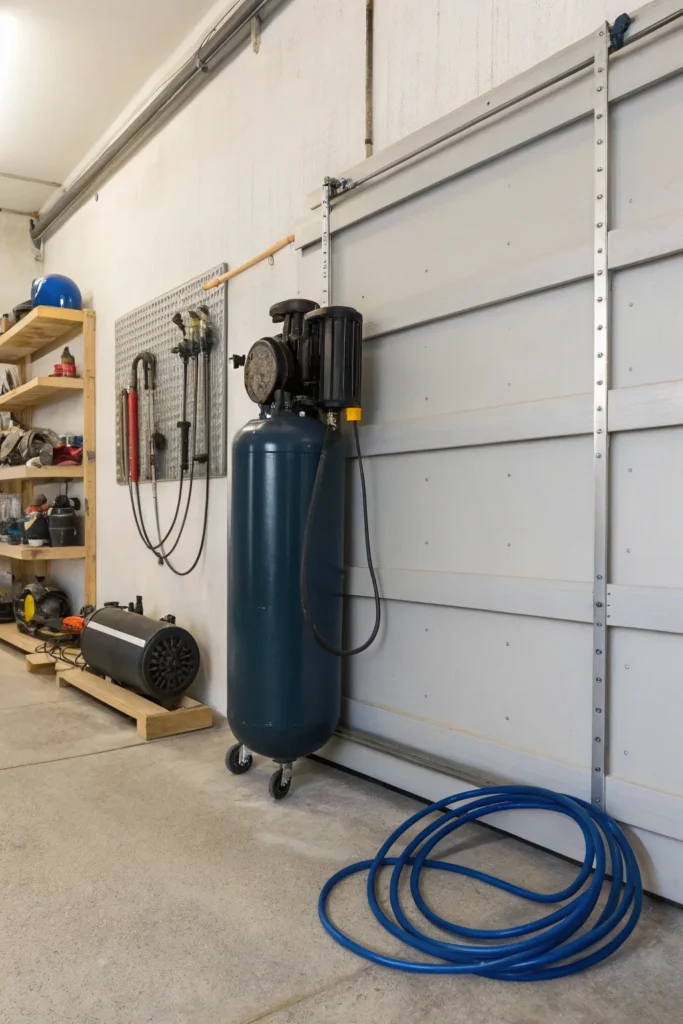
Save floor space by mounting your air compressor on the wall with proper vibration dampening. This positioning keeps the unit accessible while freeing up valuable floor area for work activities and storage.
Consider noise implications for neighbors and family when positioning compressors. Add quick-connect fittings throughout your workshop for easy tool connection. Proper mounting prevents vibration damage to both the compressor and your garage structure.
Flexible Lighting Solutions
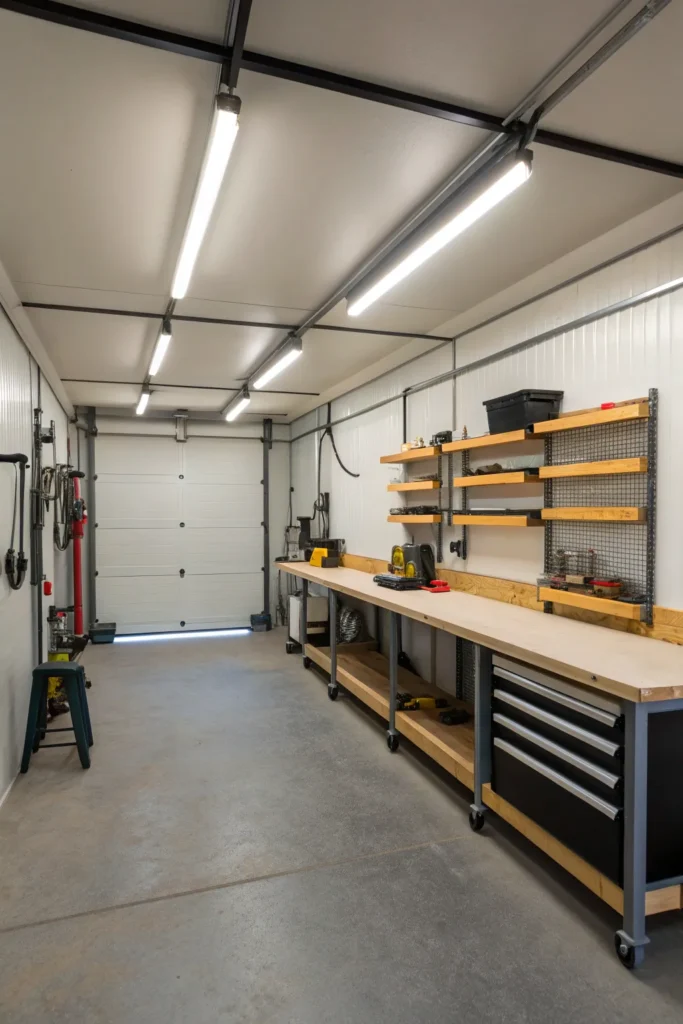
Install task lighting that adapts to different work areas and project types. Adjustable LED strips, swing-arm lamps, and portable work lights ensure you can see details clearly regardless of where you’re working in your compact space.
Choose lighting with high color rendering for accurate material and finish assessment. Consider lighting controls that let you adjust brightness for different tasks. Good lighting makes small workshops feel larger while reducing eye strain during detailed work.
Your small garage workshop can handle bigger projects than you think when you organize thoughtfully and choose the right solutions for your space. These ideas prove that workshop success comes from smart planning rather than square footage. Start with the organizational challenges that frustrate you most, then build systems that support the type of work you actually do. You’ll discover that a well-organized small workshop often outperforms larger, cluttered spaces for getting projects done efficiently and enjoyably.

